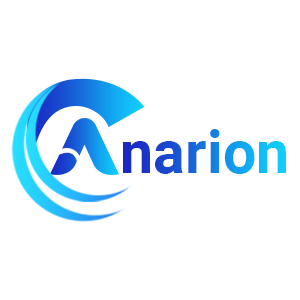Redmine VM by Anarion Technologies
Redmine is a robust, open-source, web-based project management and issue tracking tool that helps teams plan, track, and collaborate on projects effectively. With its wide array of features, Redmine serves as a central platform for organizing work, improving communication, and maintaining high levels of productivity across various types of projects. Its flexibility, scalability, and rich feature set make it suitable for managing projects in software development, IT infrastructure, and even non-technical industries.
1. Multi-Project Support: Redmine allows you to manage multiple projects simultaneously from a single interface, making it ideal for organizations with complex workflows and multiple teams. Each project can have its own set of configurations, permissions, and settings, allowing complete customization and control.
2. Issue Tracking: Redmine’s issue tracking system is one of its core features. It allows users to create, assign, and prioritize tasks, track their progress, and link them to specific milestones, versions, and deadlines. Issues can be categorized (e.g., “Bug”, “Feature Request”, “Support”), and users can easily search and filter issues based on various criteria like priority, assignee, and status.
3. Custom Workflows: Redmine offers powerful customization options for workflows, allowing users to tailor how issues progress through their lifecycle. You can define custom statuses, transitions, and roles that match the specific needs of your team, ensuring that the issue tracking process aligns with your organizational processes.
4. Gantt Charts and Calendar: Redmine provides an integrated Gantt chart that allows you to visualize project timelines, dependencies, and milestones. This tool helps you manage project schedules, track progress, and ensure that tasks are completed on time. The built-in calendar allows teams to see upcoming deadlines, events, and milestones at a glance.
Redmine is a powerful, flexible, and user-friendly project management and issue tracking tool. Its extensive feature set, including multi-project management, customizable workflows, and seamless version control integration, makes it an invaluable asset for teams of all sizes. Whether you’re managing software development projects, IT infrastructure tasks, or business operations, Redmine can be customized to fit your unique needs. Plus, being open-source and supported by a strong community, it remains a highly cost-effective and scalable solution for project management.
To subscribe to this product from Azure Marketplace and initiate an instance using the Azure compute service, follow these steps:
1. Navigate to Azure Marketplace and subscribe to the desired product.
2. Search for “virtual machines” and select “Virtual machines” under Services.
3. Click on “Add” in the Virtual machines page, which will lead you to the Create a virtual machine page.
4. In the Basics tab:
- Ensure the correct subscription is chosen under Project details.
- Opt for creating a new resource group by selecting “Create new resource group” and name it as “myResourceGroup.”
5. Under Instance details:
- Enter “myVM” as the Virtual machine name.
- Choose “East US” as the Region.
- Select “Ubuntu 18.04 LTS” as the Image.
- Leave other settings as default.
6. For Administrator account:
- Pick “SSH public key.”
- Provide your user name and paste your public key, ensuring no leading or trailing white spaces.
7. Under Inbound port rules > Public inbound ports:
- Choose “Allow selected ports.”
- Select “SSH (22)” and “HTTP (80)” from the drop-down.
8. Keep the remaining settings at their defaults and click on “Review + create” at the bottom of the page.
9. The “Create a virtual machine” page will display the details of the VM you’re about to create. Once ready, click on “Create.”
10. The deployment process will take a few minutes. Once it’s finished, proceed to the next section.
To connect to the virtual machine:
1. Access the overview page of your VM and click on “Connect.”
2. On the “Connect to virtual machine” page:
- Keep the default options for connecting via IP address over port 22.
- A connection command for logging in will be displayed. Click the button to copy the command. Here’s an example of what the SSH connection command looks like:
“`
ssh azureuser@10.111.12.123
“`
3. Using the same bash shell that you used to generate your SSH key pair, you can either reopen the Cloud Shell by selecting >_ again
or going to https://shell.azure.com/bash.
4. Paste the SSH connection command into the shell to initiate an SSH session.
Usage/Deployment Instructions
Anarion Technologies – Redmine
Note: Search product on Azure marketplace and click on “Get it now”
Click on Continue
Click on Create
Creating a Virtual Machine, enter or select appropriate values for zone, machine type, resource group and so on as per your choice.
After Process of Create Virtual Machine. You have got an Option Go to Resource Group
Click Go to Resource Group
Click on the Network Security Group: redmine-nsg
Click on Inbound Security Rule
Click on Add
Add Port
Add Port
Destination Port Ranges Section* (where default value is 8080)
3000
Select Protocol as TCP
Option Action is to be Allow
Click on Add
Click on Refresh
Copy the Public IP Address
SSH into your terminal and run following commands:
$ sudo su
$ apt update
$ cd redmine
$ docker-compose up -d
Use the browser to access the application at http://”instance Ip address:3000”
Default Login credentials are:
Username: admin
Password: admin12345
Welcome to the Redmine Dashboard
ThankYou!!
All your queries are important to us. Please feel free to connect.
24X7 support provided for all the customers.
We are happy to help you.
Contact Number: +1 (415) 800-4585
Support E-mail: support@anariontech.com



